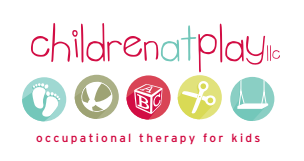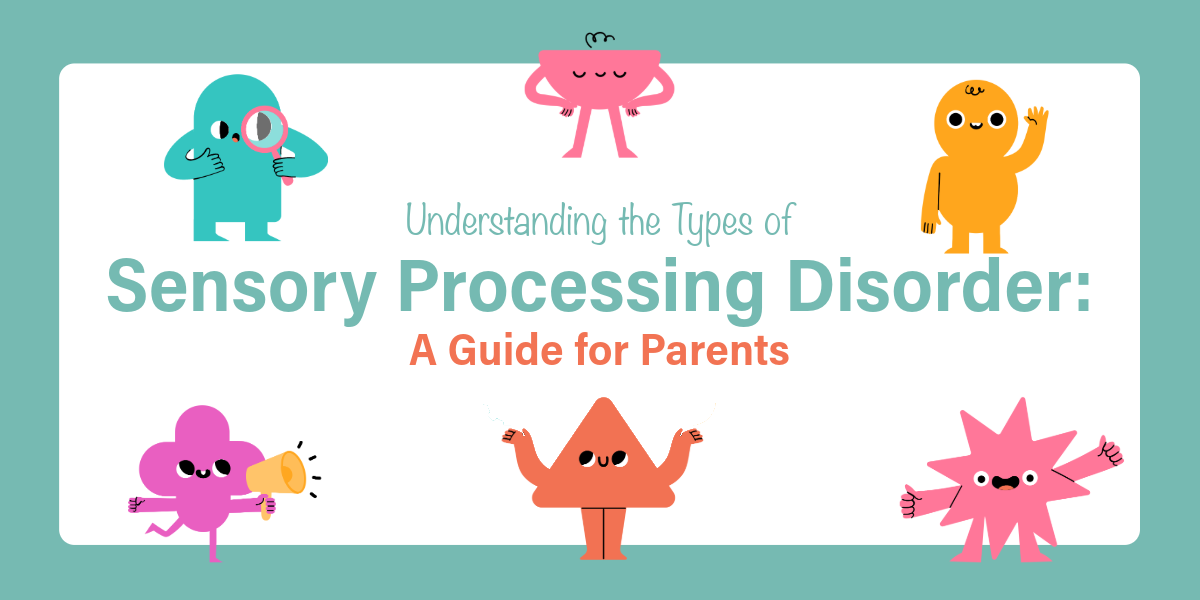Sensory Processing Disorder (SPD) is a difference in how the brain receives, organizes, and responds to sensory input like touch, sound, movement, and more.
Many parents will bring their child for an OT evaluation, unsure if their child is struggling with sensory processing. We hear things like “well, he doesn't cover his ears, so I don't think he has it,” or “he is uncoordinated, but he will wear any type of clothing.” Oftentimes, this is because they have heard of one “type” of sensory processing disorder, and there is so much more to learn!
Your child may experience the world through their senses in ways that are more intense, more sensitive, or just different than others. This can impact their behavior, emotions, learning, body movements, and ability to interact with the world.
There are three main types of sensory processing disorder: sensory-based motor disorder, sensory modulation disorder, and sensory discrimination disorder. Sensory modulation disorder is the variety that most people have heard of and tends to be the most outwardly obvious, but it has three subtypes. Here is a helpful infographic to illustrate the types of SPD, and we’ll explain the types in more depth below.
Sensory Modulation Disorder
Sensory Modulation Disorder involves how a child regulates their response to sensory input. Kids may respond too much, too little, or crave sensory experiences.
Three Subtypes:
Sensory Over-Responsive
These kids are often very sensitive to things like loud noises, bright lights, or even certain clothing textures. They may:Cover their ears for sounds others don’t notice.
Get upset by tags in clothing or toothbrushing.
Avoid crowded places or physical touch.
Sensory Under-Responsive
These kids may not notice sensory input the way others do. They might:Not react to pain or temperature.
Seem “in their own world” or very tired
Miss cues like their name being called.
Sensory Seeking
These kids crave sensory experiences and may:Constantly touch things or bump into people.
Love spinning, jumping, or crashing into furniture.
Be labeled as "wild" or "hyperactive" when really, they're trying to get the input their bodies crave.
Sensory-Based Motor Disorder
This type affects how sensory information is used to plan and carry out movements. These kids may seem clumsy or struggle with physical tasks.
Two subtypes:
Postural Disorder
Kids with this type have trouble maintaining posture and balance. You might notice:Slouching or leaning on things for support.
Difficulty sitting upright or standing still.
Fatigue during physical tasks.
Dyspraxia (Motor Planning Challenges)
Dyspraxia means trouble planning and coordinating movements. These kids may:Struggle with learning new physical tasks like riding a bike.
Appear clumsy or uncoordinated.
Have trouble with dressing, writing, or using utensils.
Sensory Discrimination Disorder
This type involves difficulty understanding the details of sensory input. The child might receive the input, but the brain has trouble making sense of it.
Kids with SDD might:
Mix up similar sounds or letters.
Struggle to tell how much force to use (like pushing too hard when writing).
Have difficulty with body awareness, like not knowing where their arms or legs are in space.
Why This Matters
Understanding the type of SPD your child may be experiencing can help you make sense of behaviors that seem confusing or frustrating. It can also help guide therapies and strategies that truly support your child.
SPD is not currently recognised as a stand-alone diagnosis; however, it is a consideration in many diagnoses, and it has big impacts on everyday life for many children and adults. Occupational Therapists are not doctors, so they are not licensed to diagnose. Doctors, such as psychologists, developmental pediatricians, and neurologists, will usually recommend OT as part of a treatment plan after they determine a diagnosis of a condition that includes sensory processing challenges. Whether your child had a formal diagnosis or not, OT’s are qualified to recognize symptoms of SPD and does Your OT will not be able to diagnose you with the disorder, but they can give your child and family helpful tools to both help manage the symptoms and and help your child’s nervous system thrive! We use sensory integration theory to cause the needed nervous system changes and address underlying foundation skills deficits.
The good news? With the right support, kids with SPD can thrive. In OT, we will work on providing the “just right” challenge for your child’s nervous system to better organize and interpret different types of sensory information. We will equip your family with accommodation and strategies to use at home to help your child be more successful in home, school, and community environments.
Final Thoughts for Parents
You are your child’s best advocate, and you know them better than anyone else. Trust your gut. If something feels “off,” you’re right to ask questions. Since you’re still reading this, you probably suspect your child might be struggling with sensory processing. You can seek help from an occupational therapist, like us! We know how daunting those first steps can be, and how impactful and important early interventions are for children. So we offer free consultations to help parents learn about OT and determine if OT would be beneficial for their child.

